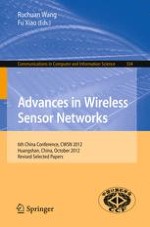2013 | Buch
Advances in Wireless Sensor Networks
6th China Conference, CWSN 2012, Huangshan, China, October 25-27, 2012, Revised Selected Papers
herausgegeben von: Ruchuan Wang, Fu Xiao
Verlag: Springer Berlin Heidelberg
Buchreihe : Communications in Computer and Information Science
